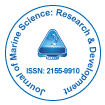RAIA in Particular and the Importance of Marine Observatories
Received Date: Jul 07, 2022 / Published Date: Aug 04, 2022
Abstract
Coastal and Oceanic Observatories are crucial resources for providing knowledge about the state, phenomena, and processes of the ocean. They fill the demand for a deeper comprehension of coastal and ocean dynamics by exposing the peculiarities and vulnerabilities of the region. By foreseeing the development of extreme weather and oceanic occurrences and assisting in minimizing related personal and material damages and expenditures, these observatories are incredibly helpful in guiding human actions in response to natural disasters and anticipated climate change impacts. Operational oceanography and coastal, marine, and oceanic observations have drawn increased interest from international organizations and local governments, leading to significant investments in these fields. To learn more about the distinctive qualities of each ocean region and its significance in the larger global context, a range of physical, chemical, and biological data have been gathered. Additionally, the interest of the general public in marine issues and observatories has increased, particularly in regard to issues of vulnerability, sustainability, and climate change. Thus, an observatory’s data and output are beneficial to a wide spectrum of stakeholders, from national and local governments to the general public. A brief examination of the social interest in these observatories and related challenges is offered, along with an introduction to ocean observatories and their significance on a national and regional level. The RAIA observatory is then used as an example to show the possibility of a coastal and ocean observatory. This cutting-edge observatory is designed to serve a wide range of stakeholders and improve operational oceanography, technology, and marine science for the North Western Iberian coast.
Citation: Malakar B (2022) RAIA in Particular and the Importance of Marine Observatories. J Marine Sci Res Dev 12: 354. Doi: 10.4172/2155-9910.1000354
Copyright: © 2022 Malakar B. This is an open-access article distributed under the terms of the Creative Commons Attribution License, which permits unrestricted use, distribution, and reproduction in any medium, provided the original author and source are credited.
Share This Article
Recommended Journals
Open Access Journals
Article Tools
Article Usage
- Total views: 2269
- [From(publication date): 0-2022 - Mar 31, 2025]
- Breakdown by view type
- HTML page views: 1941
- PDF downloads: 328
